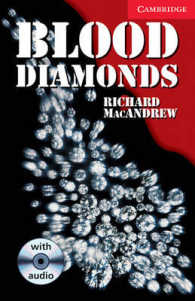基本説明
Email hoaxes are a fascinating object for discourse linguistics as they exemplify a major pragmatic tendency in Computer Mediated Comunication, namely deceptivity and a lowering of sincerity standards. This study examines
formal and functional aspects of email hoaxes and provides ample evidence both from a systematized corpus and in situ data collected online. Besides a structural and microlinguistic analysis, it identifies key issues such as pragmatic duality, narrativity and textual variation and change in email hoaxes. In conclusion, a digital genre model is outlined that bridges both the old/new and the formal/functional gaps and may be applied to many other digital genre ecologies.
Full Description
How genres emerge and evolve on the Internet has become one of the central questions in studies of computer-mediated communication (CMC). This book addresses the issue of genrefication by giving an in-depth analysis of email hoaxes as a candidate for digital genre status. Email hoaxes are deceptive messages that spread in digital social networks; they are a fascinating object for discourse linguistics as they exemplify a major pragmatic tendency in CMC, namely deceptivity and a lowering of sincerity standards. This study examines formal and functional aspects of email hoaxes and provides ample evidence both from a systematized corpus and in situ data collected online. Besides a structural and microlinguistic analysis, it identifies key issues such as pragmatic duality, narrativity and textual variation and change in email hoaxes. In conclusion, a digital genre model is outlined that bridges both the old/new and the formal/functional gaps and may be applied to many other digital genre ecologies.
Contents
1. 1. Introduction; 2. 2. Introducing the data; 3. 3. Formal aspects of EHs: A microlinguistic analysis; 4. 4. The dynamics of EH transmission: Chronological aspects; 5. 5. The pragmatics of EHs; 6. 6. Narrativity in EHs; 7. 7. A genre study of EHs; 8. 8. References; 9. 9. Appendix







